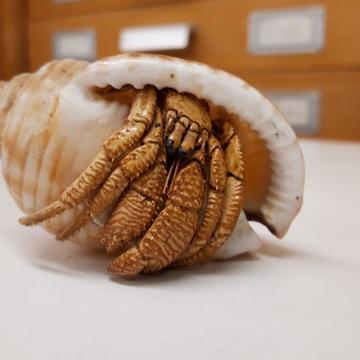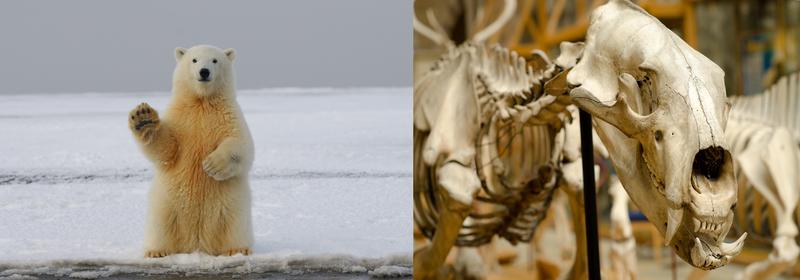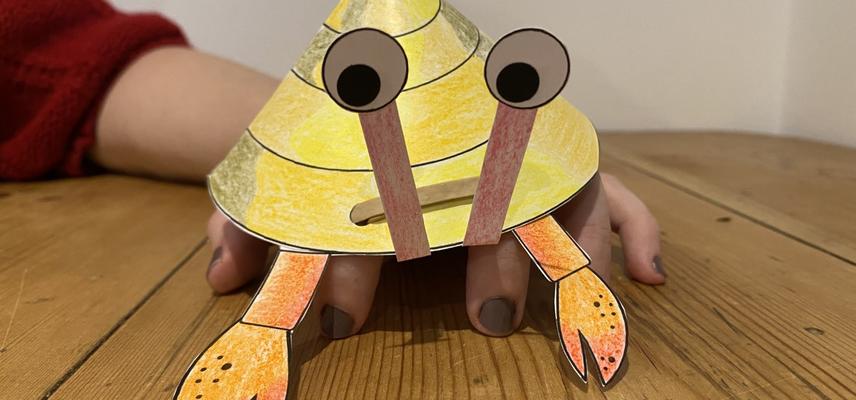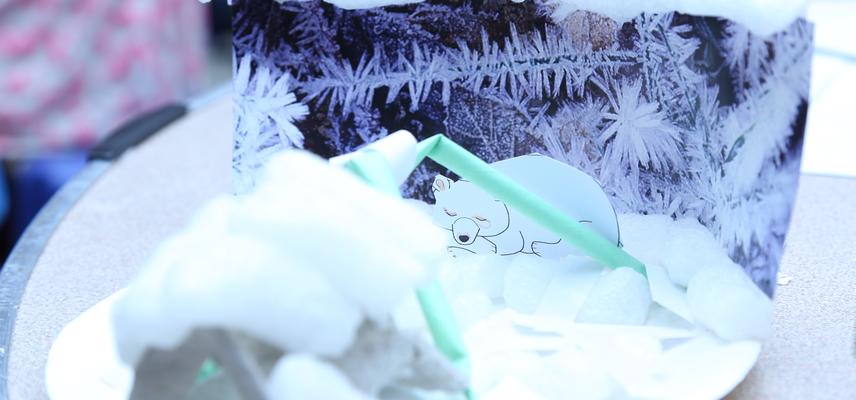Home Sweet Home
Home Sweet Home - Activities
Hermit Crab Hand Puppet
Polar Bear Den
During the winter lots of animals will build themselves a temporary home to keep them warm and protected through the winter months. Some fly to new homes and habitats to seek out warmer weather, and some walk around wearing their homes; swapping for a bigger home when they outgrow it!
Discover more about the ‘homes’ of the hermit crab and the polar bear here:
Hermit Crab

Life’s swell inside a shell
Hermit crabs can be found living in rock pools, throughout the shore, and in deep-sea waters. What makes them different from other crabs is that they carry their homes around with them! Because the hermit crab has a soft and fragile body, it finds an old whelk shell to live in for protection. As the hermit crab sheds its outer skeleton and grows larger, it will find a new more spacious shell to live in. Before leaving its old shell, it will test the size of a potential new home using its claws (a bit like how we would hold up a measuring tape). If the shell is not large enough or is cracked, the hermit crab will continue its search for a more suitable home.
Friend in anemone
A hermit crab often carries an anemone on its shell for protection. The anemone is useful to the hermit crab as it uses its stinging tentacles to keep predators away. In return, the anemone feeds on the left-overs of the hermit crab’s meals. We call it symbiosis when each creature helps the other.
Polar Bear

Polar bears blend in well with their Artic habitat which is covered in snow and ice. They spend much of their time on the annual Arctic sea ice where they hunt, live and breed. As the Arctic melts, polar bear mothers use their sharp claws to tunnel out dens in the snow, where they give birth to their cubs, keeping them safe and warm over the winter.
Polar bears are the heaviest of all the bear species. Living in cold conditions, the females need to build up their fat stores to get them through the winter as they will sleep for seven months in their cosy den underground to keep them and their cubs warm. Polar bears typically give birth to two cubs and they are about the same length as a 30cm classroom ruler. They will live with their mother in the den for around three months before they are strong enough to cope with the cold weather outside.







